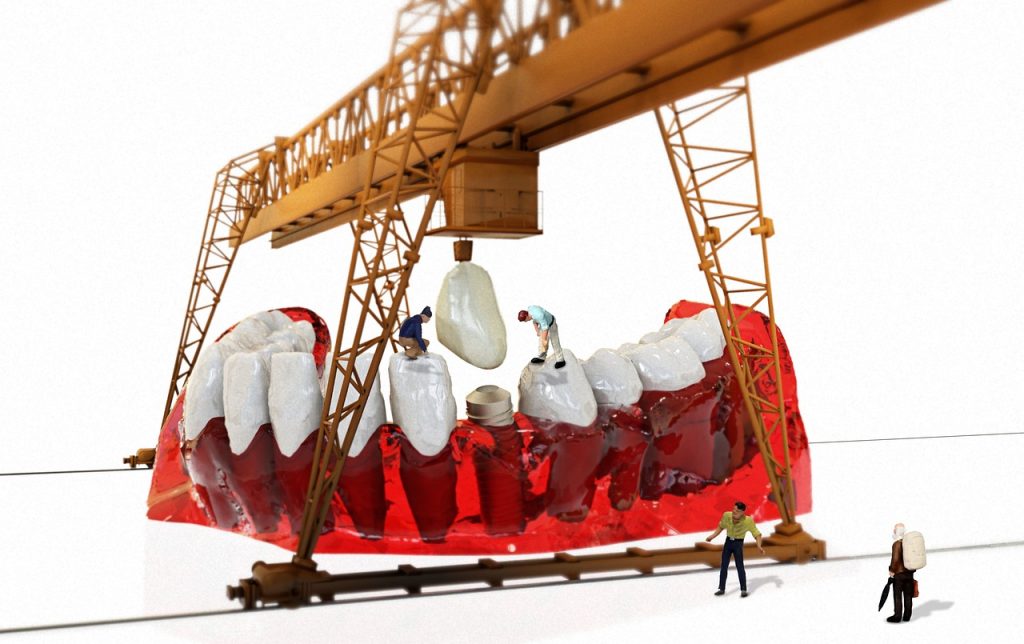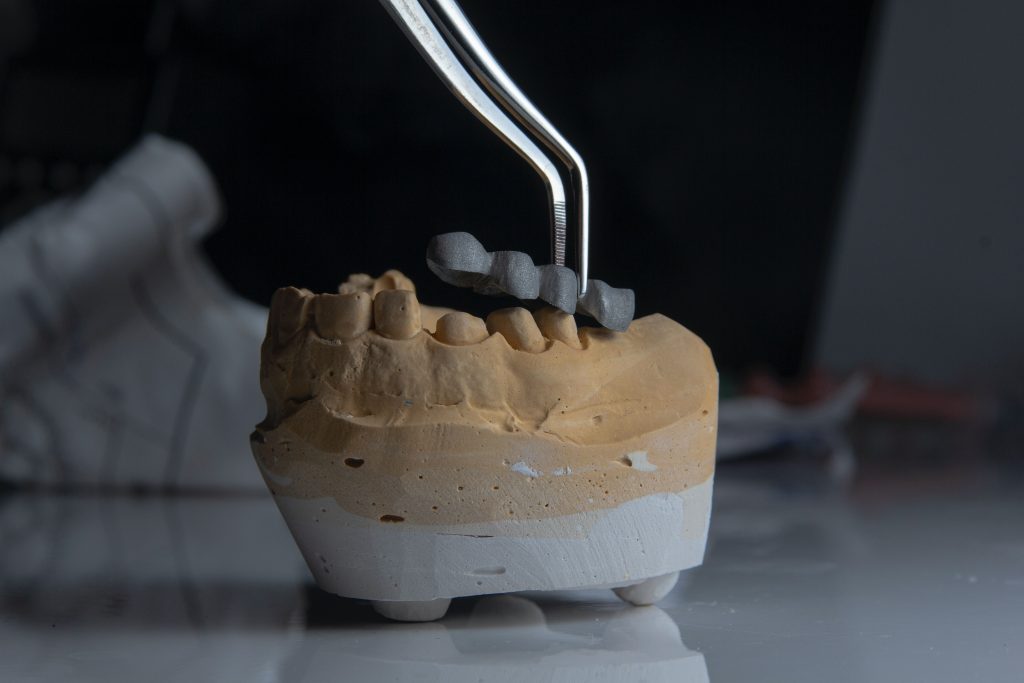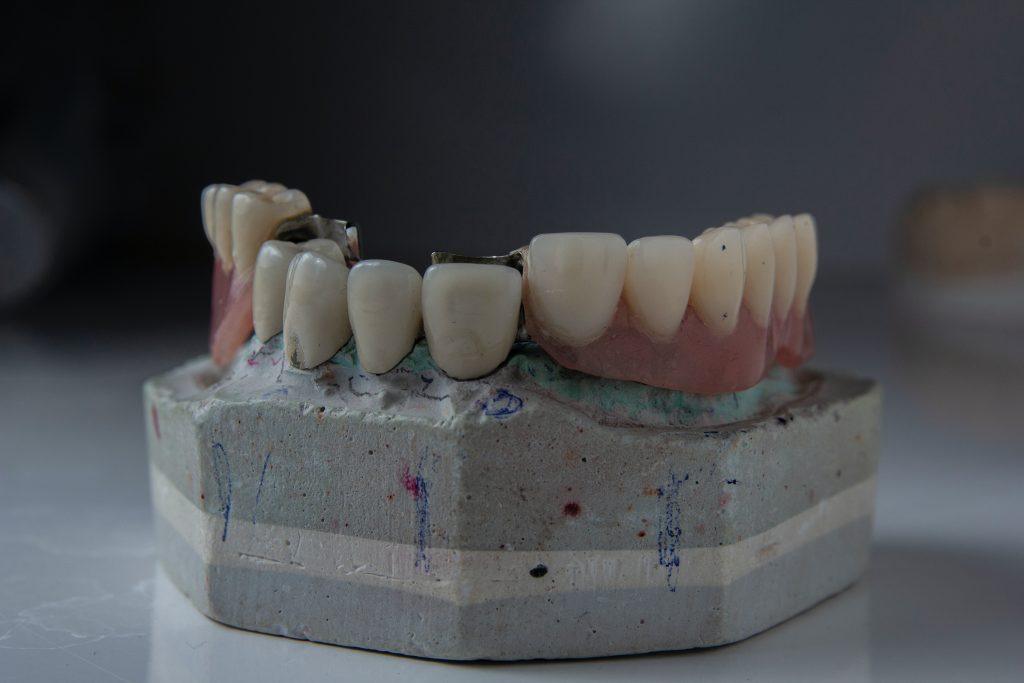
Show the clinics offering Dental bridges
What are dental bridges?
 Living with missing teeth can be difficult, but treatments such as dental bridges can restore a bright smile and confidence.
Living with missing teeth can be difficult, but treatments such as dental bridges can restore a bright smile and confidence.
Dental bridges are a popular and successful method of replacing missing teeth. Unlike other options for missing teeth, such as traditional dentures, dental bridges are permanent dentures that mimic the look and feel of natural teeth. These replacement teeth typically last 5 to 15 years, and even longer with proper oral care. Dental bridges are also available on the NHS. Due to their ease of access, they are a popular option to replace missing teeth. Like any other treatment, dental bridges have their pros and cons. You and your dentist should decide if this is the best treatment for your particular case. And because there are many factors to consider when deciding if this is the right treatment for you, this complete guide includes answers to all questions such as .
What is a dental bridge? What is the dental bridge procedure? What types of dental bridges are there? What is the difference between dental bridges and implants? How do you clean your dental bridge? Do dental bridges hurt? How much does a dental bridge cost? What do dental bridges look like? Read on to learn about dental bridges and whether they are the best treatment for you and your oral health. First of all, you should not be offended if you lose a tooth, on the contrary, you are in good company. A whopping 30% of the world population between the ages of 65 and her 74 do not have natural teeth. Also, in an adult between the ages of 20 and 64, on average he is missing 7 or more teeth. This is what statistically most people deal with, so let’s remove the bias and learn about the solution instead.
We briefly touched on the definition of a dental bridge in the introduction, but let’s dig a little deeper. A dental bridge is a denture or artificial “body part” that fills the gaps between teeth, either natural teeth with crowns as anchors on either side, or implants. You could even say it fills the gap! Dental bridges can be made from a variety of materials, including metal, porcelain, and ceramic. You can also get dental bridges for your front or back teeth. Anywhere you need to replace a lost tooth. Dental bridges that replace missing teeth have many benefits, and the aesthetic benefits are obvious, but the health benefits are even greater.
Dental bridge - treatment steps
If you’ve decided to replace your teeth with dental bridges, you’re probably pretty excited to get started. If you want an invisible dental bridge that lasts and is as comfortable as your natural teeth, it takes several procedures and multiple visits to the dentist.
So what is the dental bridge procedure? Now, let’s take a step-by-step look at the dental bridge procedure so that you have all the information you need.
First visit: Temporary bridge adjustment
 If only one or two teeth are missing, dental bridges usually use healthy teeth (abutments) on either side as anchors. So the first step is to prepare the teeth to make sure they are in the right shape for a perfectly fitting bridge. During tooth preparation, the abutment should be shaped literally. This means that the tooth must be filed down. Don’t worry, the procedure is done under local anesthesia, so you won’t feel any pain! After the tooth is filed, the dentist takes an impression of the abutment tooth, molds it into a mold, and sends it to the dental laboratory. There, a dental technician uses your impressions to create a dental bridge that fits your mouth perfectly.
If only one or two teeth are missing, dental bridges usually use healthy teeth (abutments) on either side as anchors. So the first step is to prepare the teeth to make sure they are in the right shape for a perfectly fitting bridge. During tooth preparation, the abutment should be shaped literally. This means that the tooth must be filed down. Don’t worry, the procedure is done under local anesthesia, so you won’t feel any pain! After the tooth is filed, the dentist takes an impression of the abutment tooth, molds it into a mold, and sends it to the dental laboratory. There, a dental technician uses your impressions to create a dental bridge that fits your mouth perfectly.
Your dentist may also take a tooth-colored sample at this time, as the bridge is designed to match the color of your teeth to look natural. If you have multiple missing teeth or unhealthy abutments, you may need dental implants to hold the bridge in place.
A dental implant is an artificial tooth root, usually made of titanium. When using dental implants, the gums must heal before proceeding with the dental bridge procedure.
During this first visit, your dentist may place a temporary bridge that is attached with temporary bridge cement. The materials for temporary dental bridges are different from those used for permanent bridges. Instead, they are usually made of filler materials, most often acrylic resins. This bridge protects the molded teeth while a permanent bridge is created. It also helps fill in any noticeable gaps left by missing teeth. No need to worry about temporary bridge costs. This is likely to form part of the total cost of the bridge, which is listed at £269.30 in Volume 3 of the NHS. If paid privately, the total cost of a dental bridge can range from £200 to £3,000 depending on where you go, the type of bridge you get and the materials used. However, we’ll talk more about pricing a little further down.
Second Visit: Placing Permanent Bridges
After the permanent bridge has been fabricated in the dental lab and sent to the dentist, and/or once the mouth has healed if implants are also needed, the permanent bridge can be placed. Local anesthesia will be administered, so you won’t feel the pain of the first visit. The dentist then removes the temporary bridge and cleans the abutments. The dentist then applies dental cement to attach the permanent bridge to the abutments. The dentist will then ensure that the bridge is in the proper position and you will be able to bite with your new teeth for the first time. It may feel a little strange at first, but you get used to it quickly. Your dentist will make final adjustments and send you on a happy journey. The cost of a permanent dental bridge is covered by NHS Volume 3 at £269.30 or paid privately. If you choose a private dentist, the cost of your bridge will depend on the bridge material and the type of bridge you choose.
How long do dental bridges last?
 The lifespan of a dental bridge depends on both the quality of the bridge and the quality of your oral care, but let’s take a look at some details. How long should a dental bridge be used? A traditional dental bridge should be used for 5 to 15 years before needing replacement. Of course, good oral hygiene and regular checkups will ensure they last as long as possible. How long do temporary dental bridges last? During your first visit to the dentist to get a bridge, your dentist will ask you to protect your newly formed teeth until you are ready for a permanent bridge. may provide a temporary bridge. The life of a temporary bridge can change if you do not replace it with a permanent bridge. However, care should be taken to wear the temporary bridge only as long as instructed by the dentist and replace it with a fixed bridge when the fixed bridge is ready.
The lifespan of a dental bridge depends on both the quality of the bridge and the quality of your oral care, but let’s take a look at some details. How long should a dental bridge be used? A traditional dental bridge should be used for 5 to 15 years before needing replacement. Of course, good oral hygiene and regular checkups will ensure they last as long as possible. How long do temporary dental bridges last? During your first visit to the dentist to get a bridge, your dentist will ask you to protect your newly formed teeth until you are ready for a permanent bridge. may provide a temporary bridge. The life of a temporary bridge can change if you do not replace it with a permanent bridge. However, care should be taken to wear the temporary bridge only as long as instructed by the dentist and replace it with a fixed bridge when the fixed bridge is ready.
Materials for dental bridges
Dental bridges can be made from a variety of materials. Types of dental bridge materials include porcelain, ceramic, metal alloys, acrylic, and gold. Let’s take a look at the most common types of dental bridge materials.
- Porcelain Dental Bridges: Porcelain is durable and very similar in appearance to natural teeth, so he is one of the most common materials for dental bridges.
- Ceramic Dental Bridges: Ceramics are becoming increasingly popular for use in bridges and other dental restorations due to their strength and durability. Also, in some cases, you may see gray lines on the gum lines because they don’t need to be fused to metal like porcelain.
- Metal-Ceramic Dental Bridge: A metal-ceramic bridge is actually another name for a porcelain bridge that is fused to metal. These bridges are very strong and durable and if made of titanium they are biocompatible.
- Zirconia Dental Bridges: Zirconia is considered biocompatible and stronger than other available materials. It also has the advantage of being able to reproduce the appearance of natural teeth.
How much does a dental bridge cost?
 How much does a dental bridge cost in the UK? The price of a dental bridge in the UK varies greatly depending on the type of bridge you choose and the materials used. Dentists can also set service fees that differ from their competitors. Therefore, it is beneficial to ask various dental clinics for dental bridge quotes to see who offers the best deal. How much does a dental bridge cost in the UK? Here are the average UK dental bridge costs for different types of bridges.
How much does a dental bridge cost in the UK? The price of a dental bridge in the UK varies greatly depending on the type of bridge you choose and the materials used. Dentists can also set service fees that differ from their competitors. Therefore, it is beneficial to ask various dental clinics for dental bridge quotes to see who offers the best deal. How much does a dental bridge cost in the UK? Here are the average UK dental bridge costs for different types of bridges.
- Cost of a traditional fixed dental bridge: £250-800
- Bonded Permanent Bridge Cost: £350-£1,000
- Implant-supported bridges: from €2,900
As mentioned earlier, the cost of dental bridges in the UK will vary depending on the material and the dentist. But if you’re wondering how much a dental bridge costs, the range listed will give you a fair idea of how much a dental bridge costs in the UK. In addition, NHS tape fees may be waived if you fall into a special category. Check with your dentist or Primary Care Trust to see if this applies to you.
Dental bridges abroad - Poland
If a private dental bridge is too expensive, or if the NHS dental fee doesn’t include the bridge you want, dental tourism is always an option. European countries like Poland are known for the high quality of care provided by dentists and doctors. Using a dental bridge abroad can be up to 70% cheaper than in Germany. Also, getting cheap dental bridges abroad doesn’t mean sacrificing quality. Clinics, like those in Poland, rely on positive reviews from patients to continue their practice, so they need to provide above-average care.
Dental bridge – Poland
If you go to Poland, you can get dental care much cheaper than in the UK. And you can rest assured that the care you receive will be top-notch. This is because Polish dentists must comply with the same strict EU regulations as UK dentists. Poland is he one of the most popular medical tourism destinations. Prices are much lower due to the cost of living and treatment standards are as stringent as in the UK due to the same EU regulations.

You may specifically need a dental bridge made in Poland. This type of bridge is not normally covered by the NHS and in the UK one implant costs £2,000, whereas in Poland you can get titanium implants for £1,000, plus an X-ray of one tooth shows 20 lbs, or CT – scan the entire jaw if a few teeth are missing. This is a savings of almost 50%. Why are dental bridges in Poland much cheaper than in UK? The reason that the cost of dental bridges in Poland is so low is simply that the economy in Poland is not as strong as in the UK. means Polish dentists can therefore keep costs down for dental care.

